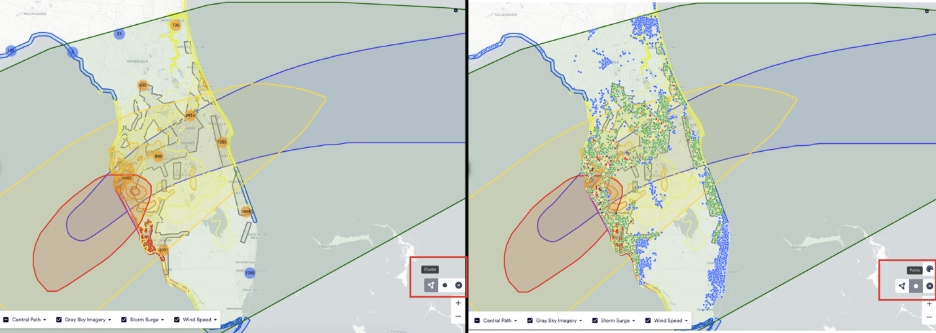We’ve enhanced the ImpactResponse System with new functionality and significant improvements to help you get even more value. Read on for the details…
If you have any questions about the new functionality or improvements, please reach out to your Nearmap CSM or email support@nearmap .com.
Improved Damage Classifications AI model
The Damage Classifications AI model delivered via the ImpactResponse System has been improved significantly. The new model is trained on 74 catastrophe events in North America and Australia, including wildfires, hurricanes, tornados, wind, and storms. This model delivers stronger performance across all core metrics – accuracy, recall, precision, and F1 score, giving insurance claims teams greater confidence in responding to catastrophe events quickly, proactively, and accurately. With Damage Classifications AI, claims teams can triage cases or initiate the claims process before First Notice of Loss (FNOL), accelerating the entire settlement process and driving customer satisfaction.
What’s new in the model
- Accuracy, recall, precision, and F1 score all improved by at least 20% compared to the previous generation.
- Improved recall for severe damage group (Major and Destroyed damage tiers) - enabling more accurate identification of heavily impacted properties.
- Refined damage class definitions to more accurately reflect FEMA’s damage assessment guidelines, particularly for structures with damage limited to non-habitable areas (for example, lanais). Such cases are now categorized as Minor instead of Major.
- Improved performance on wildfire damage classifications from expanding the training dataset to include wildfire events.
- Single damage classification is assigned per parcel, even when multiple buildings are present. The classification will reflect the most severe damage among buildings larger than 500 sq ft.
- Consistent performance across regions (North America and Australia) and peril types (fire, hurricane, tornado), making this new model suitable for deployment in both areas.
- Three new factors in the new model including Building Under Construction, Exposed Roof Deck, and Exposed Underlayment, resulting in an even more comprehensive damage model. Click here for the full list of factors in Damage Classifications AI.
Notes on the metrics
* Precision measures how often the model is correct when it predicts a specific damage class. Higher precision indicates fewer false positives.
Recall measures the proportion of properties that experienced a specific level of damage that the model correctly classified. Higher recall indicates fewer false negatives.
The F1 score combines precision and recall into a single metric. A high F1 score indicates that the model is both accurate and comprehensive in classifying the damage.
Optimizing Performance for events with a large number of properties
The Nearmap ImpactResponse System has been optimized to handle large-scale catastrophe events involving more than 500,000 properties. This enhancement delivers:
- Elimination of browser crashes
- Significantly faster loading times
- Smoother, more responsive filtering and navigation
These improvements enable insurance claims teams to respond quickly, proactively, and accurately, to catastrophe events.
State switching
This update also features a new capability to switch the view state from cluster (default) to individual points.
